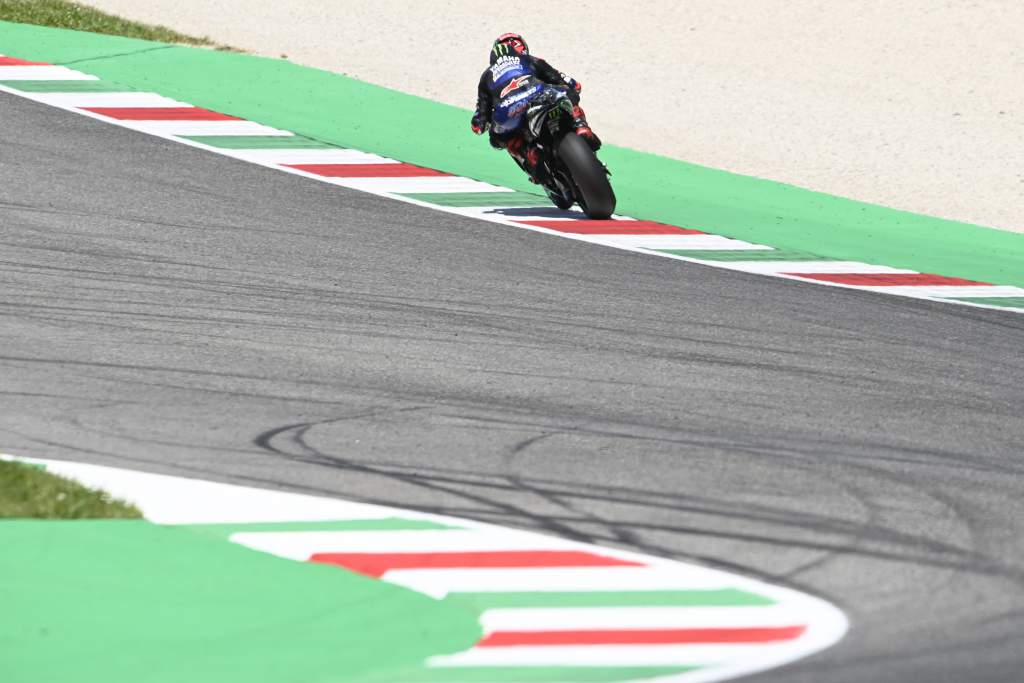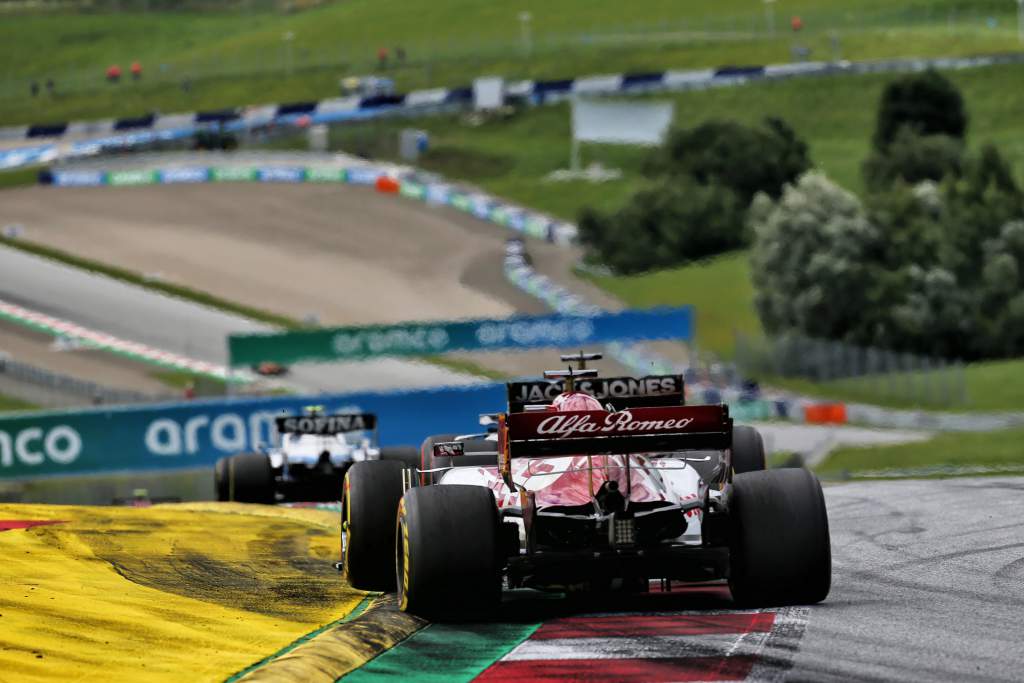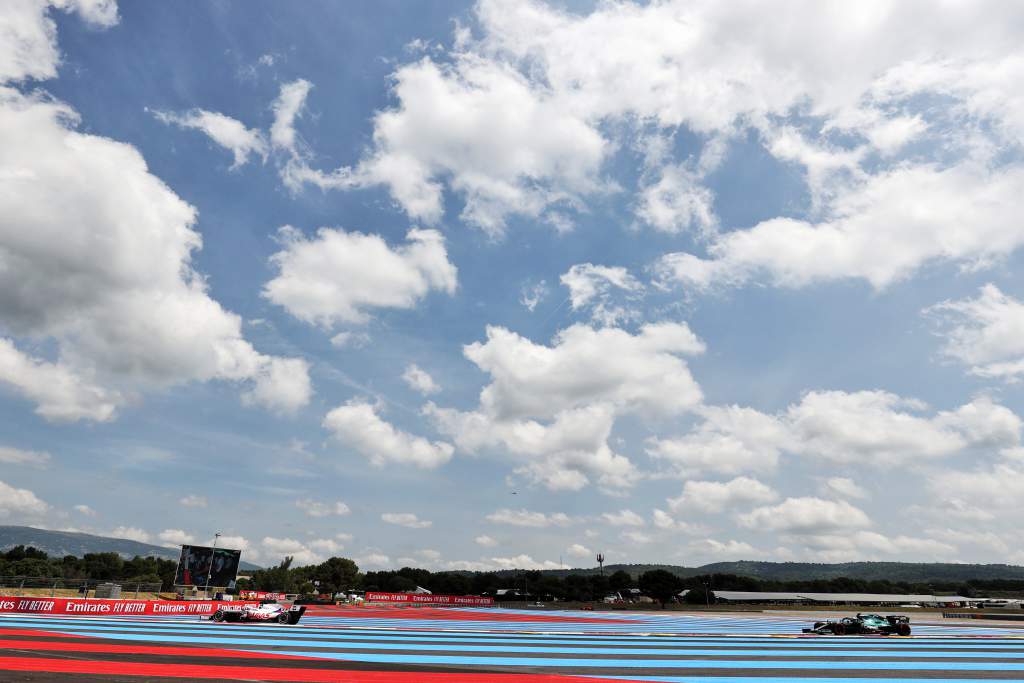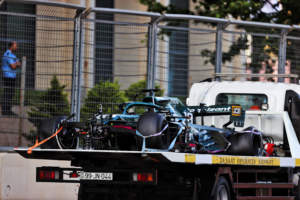Formula 1’s track limits situation infuriates me.
Once again, we had teams complaining about the damage done by kerbs that are off the circuit during Friday practice for the French Grand Prix.
I’ve been involved in Formula 1, whether it’s working for teams or trying to offer some insight to the fans at home, for longer than most and this problem just gets worse with every race.
The solution is simple – why is it so difficult for the might of F1 to come up with a sensor system that can be implanted in the track at the exit of each corner where abusing track limits can benefit your laptime?
Even in the race you can use this this extra piece of run-off to alter the gap ahead or behind you to help catch or prevent anyone from catching you.
I also watch MotoGP and every rider, commentator and viewer knows that if you touch the green paint on the outside of the kerbs, you lose your lap time. In the race, you get a couple of warnings, then it’s a long-lap penalty or three-second time penalty if it’s near the end of the race.

Though MotoGP stewarding gets its fair share of criticism, the approach to monitoring track limits comes across as clear, consistent and understandable compared to F1.
The strangest thing is that the FIA insists these yellow sausage kerbs at Paul Ricard have to be at 90 degrees to the direction of travel of the car. This simply means they are car breakers.
A front wing assembly can cost around £100,000, a complete floor assembly £25k and if you are unlucky you could wreck a chassis, which could be £250k. Yes, these kerbs were there when F1 visited Paul Ricard in 2018 and ’19 – as race director Michael Masi highlighted when teams radioed him to complain – but that’s no excuse and not a good enough reason for them still to be there.
Bottas clips his own wings going over the kerbs out of Turn 2, and returns to the pits with damage#FrenchGP 🇫🇷 #F1 pic.twitter.com/I7p4UQWgab
— Formula 1 (@F1) June 18, 2021
The FIA needs to join the club when it comes to this budget control situation. It’s not only about the teams being responsible and spending less money, the FIA also needs to help. After all, you can say stay on the track and all will be well, but showing willingness to help would be a more constructive stance to take.
At the Red Bull Ring coming out of first corner, and at Barcelona coming out of the penultimate corner, these kerbs run in line with the cars’ direction of travel. That means less risk of car damage.

If they were set at the same distance from the track’s actual width limit, which in the regulations is the white line, at, say, 1.8 metres then they would be there to arrest a slide, which we often see at both these tracks. If you go over them, then you are abusing track limits.
And if they were long enough and you were a bit over-ambitious then you could still straddle it with a little less risk of damage. But by regulation, you should also have to ride it until the end before you can come back on the track, which, if designed correctly, would be a self-defining time penalty.
At every circuit we go to, it seems the FIA has a different way of interpreting what the track limits are and which corners a driver benefits from. However, if there is no benefit from running wide, why do the drivers do it? Perhaps it’s not a time benefit, but it is a tyre load benefit. The more open you make a corner, even if it’s longer, the less load is in the tyres.
Using Turn 6 at Paul Ricard as an example, every driver is running on the blue lines exiting the corner. This is higher grip than the black stuff, so offers better traction and increased speed off the corner. We could just simply shrug and say everyone is doing it, so why bother – but then we should use that philosophy consistently at every track.
Monaco, Baku and Singapore punish you by damaging your car when it hits something harder than it. Most drivers can cope with those track limits even though a few do pay the price.
It’s when you get these wide open spaces that the drivers are tempted to push that little bit harder, hoping that they will be able to control it and believing that they will get away with it if they don’t.

Other tracks have grass or gravel off the track, but a circuit like Paul Ricard just has huge asphalt run-off areas.
On those, there are two levels of increased grip to slow down a spinning car. If you are spinning, these increased grip levels simply eat up the tyres so in the race a pitstop will be necessary.
Once we have some consistency over track limits, with everyone knowing where they stand, then we can go back to blaming drivers for when they get it wrong.
That’s something that the FIA needs to tackle and, as I’ve explained, there has to be a fairly simple way to do this electronically that will solve the problem once and for all.


